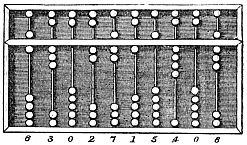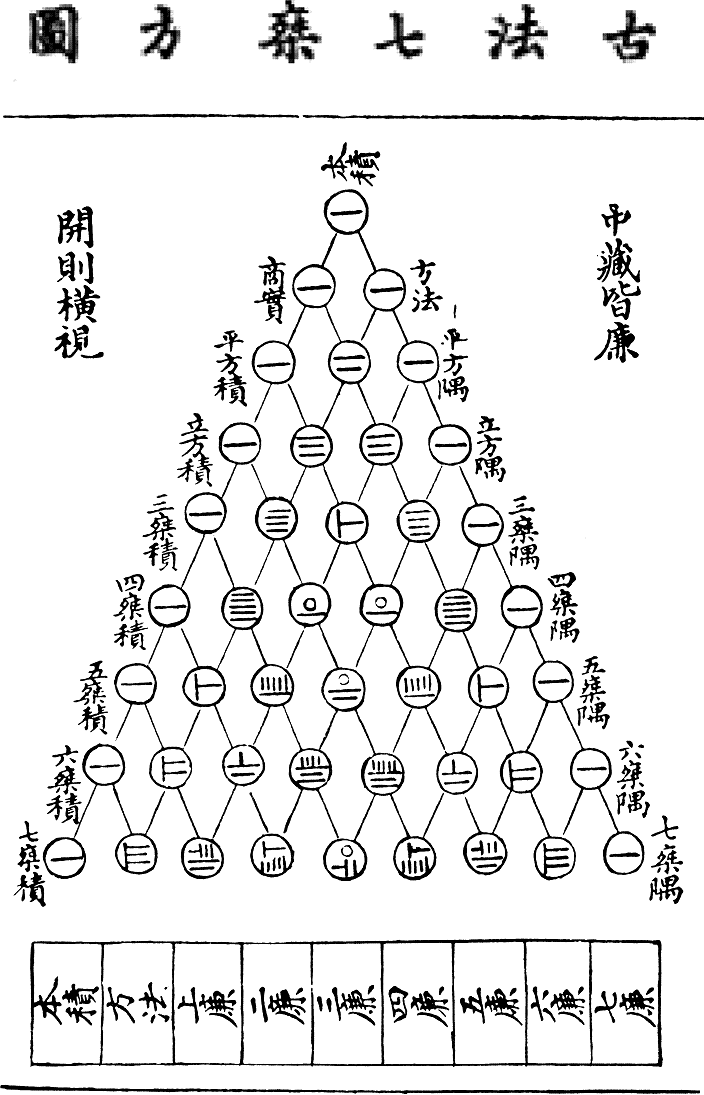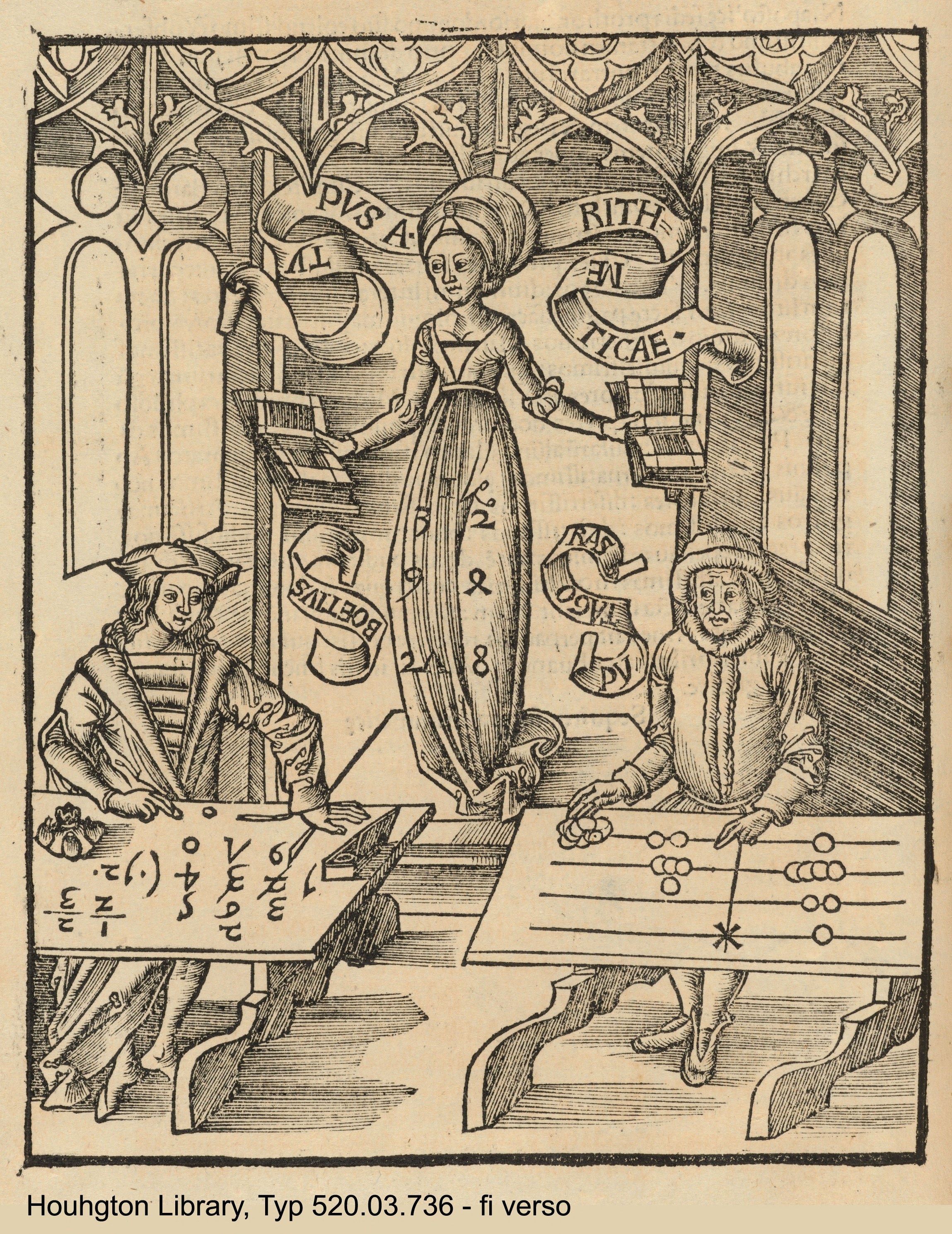|
Chinese Abacus
The suanpan (), also spelled suan pan or souanpan) is an abacus of Chinese origin first described in a 190 CE book of the Eastern Han Dynasty, namely ''Supplementary Notes on the Art of Figures'' written by Xu Yue. However, the exact design of this suanpan is not known. Usually, a suanpan is about 20 cm (8 in) tall and it comes in various widths depending on the application. It usually has more than seven rods. There are two beads on each rod in the upper deck and five beads on each rod in the bottom deck. The beads are usually rounded and made of a hardwood. The beads are counted by moving them up or down towards the beam. The suanpan can be reset to the starting position instantly by a quick jerk around the horizontal axis to spin all the beads away from the horizontal beam at the center. Suanpans can be used for functions other than counting. Unlike the simple counting board used in elementary schools, very efficient suanpan techniques have been developed to ... [...More Info...] [...Related Items...] OR: [Wikipedia] [Google] [Baidu] |
Abacus 6
The abacus (''plural'' abaci or abacuses), also called a counting frame, is a calculating tool which has been used since ancient times. It was used in the ancient Near East, Europe, China, and Russia, centuries before the adoption of the Hindu-Arabic numeral system. The exact origin of the abacus has not yet emerged. It consists of rows of movable beads, or similar objects, strung on a wire. They represent digits. One of the two numbers is set up, and the beads are manipulated to perform an operation such as addition, or even a square or cubic root. In their earliest designs, the rows of beads could be loose on a flat surface or sliding in grooves. Later the beads were made to slide on rods and built into a frame, allowing faster manipulation. Abacuses are still made, often as a bamboo frame with beads sliding on wires. In the ancient world, particularly before the introduction of positional notation, abacuses were a practical calculating tool. The abacus is still used to te ... [...More Info...] [...Related Items...] OR: [Wikipedia] [Google] [Baidu] |
0 (number)
0 (zero) is a number representing an empty quantity. In place-value notation such as the Hindu–Arabic numeral system, 0 also serves as a placeholder numerical digit, which works by multiplying digits to the left of 0 by the radix, usually by 10. As a number, 0 fulfills a central role in mathematics as the additive identity of the integers, real numbers, and other algebraic structures. Common names for the number 0 in English are ''zero'', ''nought'', ''naught'' (), ''nil''. In contexts where at least one adjacent digit distinguishes it from the letter O, the number is sometimes pronounced as ''oh'' or ''o'' (). Informal or slang terms for 0 include ''zilch'' and ''zip''. Historically, ''ought'', ''aught'' (), and ''cipher'', have also been used. Etymology The word ''zero'' came into the English language via French from the Italian , a contraction of the Venetian form of Italian via ''ṣafira'' or ''ṣifr''. In pre-Islamic time the word (Arabic ) had the meanin ... [...More Info...] [...Related Items...] OR: [Wikipedia] [Google] [Baidu] |
Decimal
The decimal numeral system (also called the base-ten positional numeral system and denary or decanary) is the standard system for denoting integer and non-integer numbers. It is the extension to non-integer numbers of the Hindu–Arabic numeral system. The way of denoting numbers in the decimal system is often referred to as ''decimal notation''. A ''decimal numeral'' (also often just ''decimal'' or, less correctly, ''decimal number''), refers generally to the notation of a number in the decimal numeral system. Decimals may sometimes be identified by a decimal separator (usually "." or "," as in or ). ''Decimal'' may also refer specifically to the digits after the decimal separator, such as in " is the approximation of to ''two decimals''". Zero-digits after a decimal separator serve the purpose of signifying the precision of a value. The numbers that may be represented in the decimal system are the decimal fractions. That is, fractions of the form , where is an integer, and ... [...More Info...] [...Related Items...] OR: [Wikipedia] [Google] [Baidu] |
Counting Rods
Counting rods () are small bars, typically 3–14 cm long, that were used by mathematicians for calculation in ancient East Asia. They are placed either horizontally or vertically to represent any integer or rational number. The written forms based on them are called rod numerals. They are a true positional numeral system with digits for 1–9 and a blank for 0, from the Warring states period (circa 475 BCE) to the 16th century. History Chinese arithmeticians used counting rods well over two thousand years ago. In 1954 forty-odd counting rods of the Warring States period (5th century BCE to 221 BCE) were found in Zuǒjiāgōngshān (左家公山) Chu Grave No.15 in Changsha, Hunan. In 1973 archeologists unearthed a number of wood scripts from a tomb in Hubei dating from the period of the Han dynasty (206 BCE to 220 CE). On one of the wooden scripts was written: "当利二月定算𝍥". This is one of the earliest examples of using counting-rod numerals in writing. ... [...More Info...] [...Related Items...] OR: [Wikipedia] [Google] [Baidu] |
Abacus
The abacus (''plural'' abaci or abacuses), also called a counting frame, is a calculating tool which has been used since ancient times. It was used in the ancient Near East, Europe, China, and Russia, centuries before the adoption of the Hindu-Arabic numeral system. The exact origin of the abacus has not yet emerged. It consists of rows of movable beads, or similar objects, strung on a wire. They represent digits. One of the two numbers is set up, and the beads are manipulated to perform an operation such as addition, or even a square or cubic root. In their earliest designs, the rows of beads could be loose on a flat surface or sliding in grooves. Later the beads were made to slide on rods and built into a frame, allowing faster manipulation. Abacuses are still made, often as a bamboo frame with beads sliding on wires. In the ancient world, particularly before the introduction of positional notation, abacuses were a practical calculating tool. The abacus is still used to te ... [...More Info...] [...Related Items...] OR: [Wikipedia] [Google] [Baidu] |
Roman Empire
The Roman Empire ( la, Imperium Romanum ; grc-gre, Βασιλεία τῶν Ῥωμαίων, Basileía tôn Rhōmaíōn) was the post-Republican period of ancient Rome. As a polity, it included large territorial holdings around the Mediterranean Sea in Europe, North Africa, and Western Asia, and was ruled by emperors. From the accession of Caesar Augustus as the first Roman emperor to the military anarchy of the 3rd century, it was a Principate with Italia as the metropole of its provinces and the city of Rome as its sole capital. The Empire was later ruled by multiple emperors who shared control over the Western Roman Empire and the Eastern Roman Empire. The city of Rome remained the nominal capital of both parts until AD 476 when the imperial insignia were sent to Constantinople following the capture of the Western capital of Ravenna by the Germanic barbarians. The adoption of Christianity as the state church of the Roman Empire in AD 380 and the fall of the Western ... [...More Info...] [...Related Items...] OR: [Wikipedia] [Google] [Baidu] |
Roman Abacus
The Ancient Romans developed the Roman hand abacus, a portable, but less capable, base-10 version of earlier abacuses like those that were used by the Greeks and Babylonians. Origin The Roman abacus was the first portable calculating device for engineers, merchants, and presumably tax collectors. It greatly reduced the time needed to perform the basic operations of arithmetic using Roman numerals. Karl Menninger said: For more extensive and complicated calculations, such as those involved in Roman land surveys, there was, in addition to the hand abacus, a true reckoning board with unattached counters or pebbles. The Etruscan cameo and the Greek predecessors, such as the Salamis Tablet and the Darius Vase, give us a good idea of what it must have been like, although no actual specimens of the true Roman counting board are known to be extant. But language, the most reliable and conservative guardian of a past culture, has come to our rescue once more. Above all, it has preserved ... [...More Info...] [...Related Items...] OR: [Wikipedia] [Google] [Baidu] |
Apothecary
''Apothecary'' () is a mostly archaic term for a medical professional who formulates and dispenses '' materia medica'' (medicine) to physicians, surgeons, and patients. The modern chemist (British English) or pharmacist (British and North American English) now perform this role. In some languages and regions, the word "apothecary" is still used to refer to a retail pharmacy or a pharmacist who owns one. Apothecaries' investigation of herbal and chemical ingredients was a precursor to the modern sciences of chemistry and pharmacology. In addition to dispensing herbs and medicine, apothecaries offered general medical advice and a range of services that are now performed by other specialist practitioners, such as surgeons and obstetricians. Apothecary shops sold ingredients and the medicines they prepared wholesale to other medical practitioners, as well as dispensing them to patients. In 17th-century England, they also controlled the trade in tobacco which was imported as a me ... [...More Info...] [...Related Items...] OR: [Wikipedia] [Google] [Baidu] |
Song Dynasty
The Song dynasty (; ; 960–1279) was an imperial dynasty of China that began in 960 and lasted until 1279. The dynasty was founded by Emperor Taizu of Song following his usurpation of the throne of the Later Zhou. The Song conquered the rest of the Ten Kingdoms, ending the Five Dynasties and Ten Kingdoms period. The Song often came into conflict with the contemporaneous Liao, Western Xia and Jin dynasties in northern China. After retreating to southern China, the Song was eventually conquered by the Mongol-led Yuan dynasty. The dynasty is divided into two periods: Northern Song and Southern Song. During the Northern Song (; 960–1127), the capital was in the northern city of Bianjing (now Kaifeng) and the dynasty controlled most of what is now Eastern China. The Southern Song (; 1127–1279) refers to the period after the Song lost control of its northern half to the Jurchen-led Jin dynasty in the Jin–Song Wars. At that time, the Song court retreated south of the ... [...More Info...] [...Related Items...] OR: [Wikipedia] [Google] [Baidu] |
Zhang Zeduan
Zhang Zeduan (; 1085–1145), courtesy name Zhengdao (), was a Chinese painter of the Song dynasty. He lived during the transitional period from the Northern Song to the Southern Song, and was instrumental in the early history of the Chinese landscape art style known as shan shui. He is known for painting ''Along the River During the Qingming Festival''. See also *Chinese art *Chinese painting *Shan shui *Lin Tinggui *Zhou Jichang *Culture of the Song Dynasty Notes References *Needham, Joseph (1971). ''Science and Civilisation in China ''Science and Civilisation in China'' (1954–present) is an ongoing series of books about the history of science and technology in China published by Cambridge University Press. It was initiated and edited by British historian Joseph Needham (1 ...'': Volume 4, Physics and Physical Technology, Part 3, Civil Engineering and Nautics. Cambridge: Cambridge University Press. External links Zhang Zeduan and his Painting Galleryat China Online ... [...More Info...] [...Related Items...] OR: [Wikipedia] [Google] [Baidu] |
Along The River During Qing Ming Festival
''Along the River During the Qingming Festival'' (''Qingming Shanghe Tu'') is a handscroll painting by the Song dynasty painter Zhang Zeduan (1085–1145) and copied many times in the following centuries. It captures the daily life of people and the landscape of the capital, Bianjing (present-day Kaifeng) during the Northern Song. The theme is often said to celebrate the festive spirit and worldly commotion at the Qingming Festival, rather than the holiday's ceremonial aspects, such as tomb sweeping and prayers. Read right to left, as a viewer unrolled it, successive scenes reveal the lifestyle of all levels of the society from rich to poor as well as economic activities in rural areas and the city, and offer glimpses of period clothing and architecture. The painting is considered to be the most renowned work among all Chinese paintings, and it has been called "China's ''Mona Lisa''." As an artistic creation, the painting has been revered and artists of subsequent dynasties ma ... [...More Info...] [...Related Items...] OR: [Wikipedia] [Google] [Baidu] |






.jpg)


